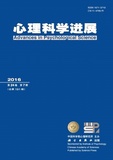|
|
Visual function related health status in Tibetan adults
Chen Lijun, Lv Hongyu, Qiu Huaiyu, Yan Fangfang, Wang Binbin, Liu Zhengkui, Huang Chang-Bing
2019, 27 (suppl.):
86-86.
PURPOSE: High altitude is related to lower oxygen, lower barometric pressure, and higher solar ultra-violet radiation, which might pose continuous stress to vision health. The present study aims to compile a short and easy-to-perform functional vision scale and conduct a large-scale investigation on visual health status of adults in Yushu, a city with an average altitude of 4200 meters.
METHODS: Nine questions were selected from popular visual health-related scales to develop a short scale measuring the visual function-related quality of life (VFQ9). Reliability and validity of VFQ9 were first tested in a Plain group (N=1904, 18-65 years old; altitude<; 500m). An investigation in Yushu was carried out by local physicians during a statewide health survey (N=16187, 18-65 years old; altitude>; 4200m). Characteristic of the visual function related health status in plain and plateau areas and the difference between them were analyzed.
RESULTS: The data from Plain group showed that the short VFQ9-scale had good reliability and validity among people aged 18-65 years old (Cronbach's α=0.80, significant correlation with the 25-term NEI-VFQ scale, r=0.92, p<; 0.01). The VFQ9 score in Plain group was 71.72±; 0.32 (M±S.E.) and there was no significant difference between male and female (73.00±; 0.51 vs 70.77±; 0.40, p>; 0.10). Mean VFQ9 score in Plateau group was 77.63±; 0.11 and male adults showed higher VFQ9 score than female (78.88±; 0.14 vs 76.69±; 0.16, p<; 0.001). Compared to the Plain group, the VFQ9 scores of the Plateau group were significantly higher in both female (76.69±; 0.16 vs 70.77±; 0.40, p<; 2.2e-16) and male (78.88±; 0.14 vs 73.00±; 0.51, p<; 2.2e-16). VFQ9 scores declined monotonously with age in the Plateau group (79.58±; 0.30 for 18-25 years to 74.07±; 0.57 for 50-65 years) and peaked around 42-49 years in the Plain group (70.36±; 0.58, 73.77±; 1.24, 73.76±; 1.97 for for 18-25 years, 42-49 years and 50-65 years, respectively), manifesting different interaction between aging and environmental factors in the two groups.
CONCLUSIONS: In present study, we compiled a short VFQ9-scale and used it to investigate the visual function related health status of adults living in different altitudes. Our findings provided insights for future interventions in quality of life in both plateau and plain.
Related Articles |
Metrics
|




